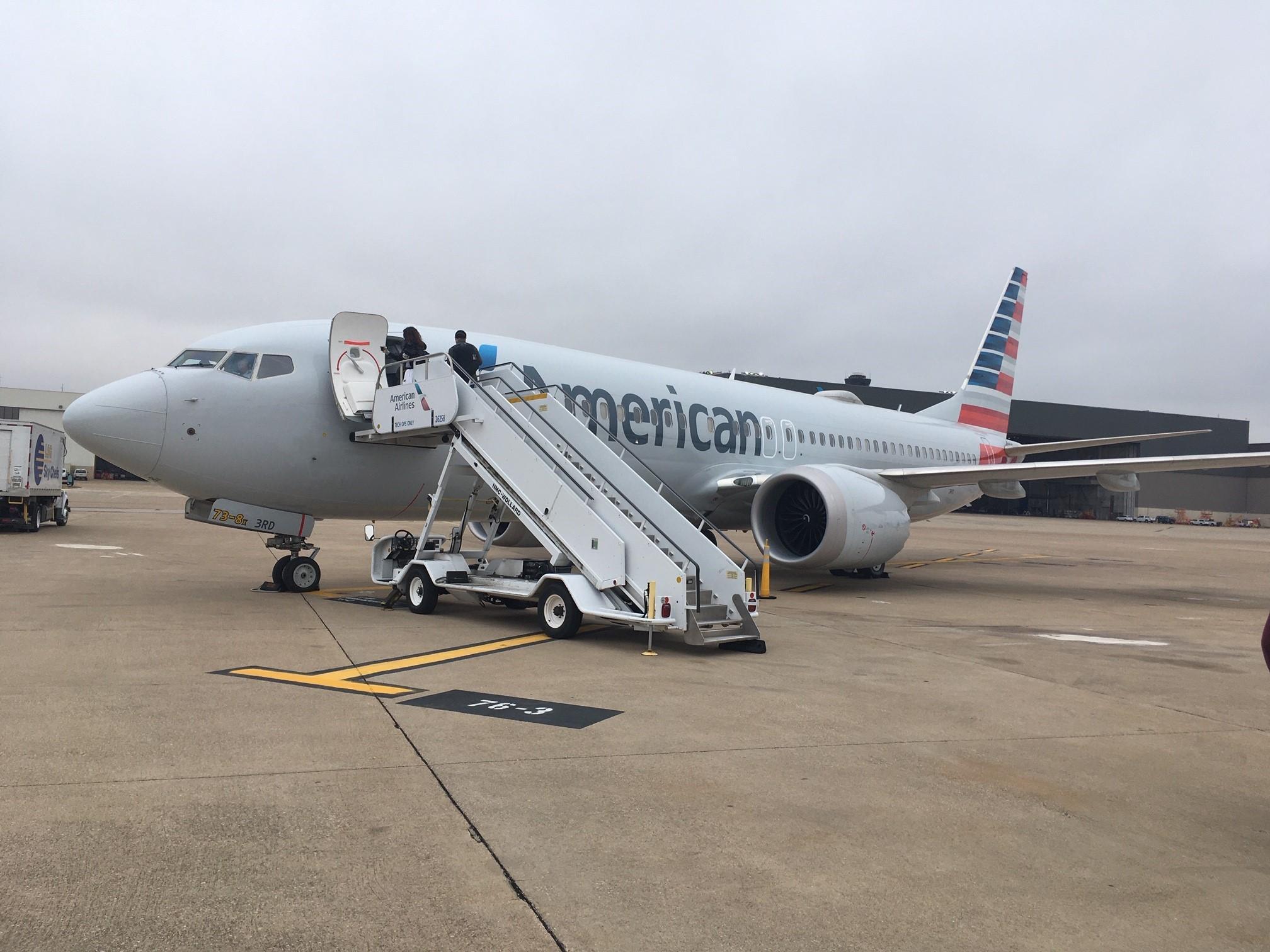
The last time this editor flew on a Boeing 737 MAX was in December 2018, a nonstop American Airlines flight from Washington National Reagan to Los Angeles LAX. That flight was after the fatal crash of a MAX in Indonesia and before the second fatal crash, and subsequent worldwide fleet grounding, in Ethiopia in March 2019.
On Dec. 2, I took to the air in a MAX again when American organized a media demonstration after the MAX was approved by FAA to return to service.
The American MAX8, registration N308RD, flew from the airline’s Dallas-Fort Worth charter hub to its maintenance facility in Tulsa and back as part of a public confidence restoration campaign. Each flight was about 45 min. and was flown by captain Pete Gamble and first officer John Konstanzer.
American will be the first to resume MAX passenger service Dec. 29 with daily flights between Miami and New York LaGuardia.
“We know that restoring customer confidence will come over time and that it needs clarity and transparency,” American chief operating officer David Seymour said, noting that any customer will be able to easily identify when their flight is operated by a MAX and, even with last minute aircraft changes, will be re-accommodated without penalty if they wish.
In Tulsa, where American’s 24 MAXs are kept until they return to service, pilots and maintenance technicians provided briefings of their work to prepare for service re-entry.
American Airlines began MAX-specific training for its 737 line pilots on Dec. 2 and expects all of them to have completed the simulator courses by the end of March, 2021.
The update training is conducted four pilots at a time, beginning with a 1-hr. brief after which the pilots split into two groups for 2 hr. in a flight simulator with an instructor. American has about 2,700 737 line pilots, and the training will be conducted on four simulators; a Boeing machine in Miami and three others at American’s home base in Dallas-Fort Worth.
FAA lifted its ban on MAX operations Nov. 18 after an exhaustive safety review, modifications to the aircraft’s maneuvering characteristics augmentation system (MCAS) at the center of crash investigations, and release of an airworthiness directive that codifies what airlines must do before their MAXs can fly.
The AD includes revisions to airline pilot training programs. New training requirements include instruction on the MCAS and high angle-of-attack operations (AOA) that can activate the system. Training also emphasizes related non-normal scenarios such as stabilizer trim operation, manual trimming on go-arounds, unreliable airspeed and runaway stabilizer. Everything that the pilots do in a simulator is done by Boeing test pilots in the aircraft with data captured for each maneuver to ensure fidelity.
American Airlines 737 fleet captain Chris Hurrell detailed the four layers of system changes for which pilots are being trained. The first is if the flight control computer monitors show a difference of 5.5 deg. or more between the two AOA readings, they will shut down the MCAS for the duration of the flight, he said.
“Another layer is if a high AOA is sensed, it will only allow the MCAS to activate one time,” Hurrell said. Third, in such a one-time event, a snapshot of where the trim indication is will be taken and the aircraft can never be in more nose-down trim than the pilot has elevator authority.
Finally, as the two flight control computers also cross monitor one another and if one says to input some kind of nose-down trim but the other computer disagrees, the pilots can lock that command out.
American Airlines’ pilots, who are represented by the Allied Pilots Association (APA), were highly influential in setting the conditions and training requirements that paved the way for the airline to return the MAX to service. APA created a MAX return to service ad hoc committee, chaired by captain John DeLeeuw, who was among the speakers at the Tulsa event and who described the past 20 months as “a pretty big journey.”
“Our goal was the return the aircraft safely not just for American Airlines, but for the whole industry. It is a model for success for the future about how to work together as a team; we didn’t disagree, we just worked together as a team,” he said.






Comments